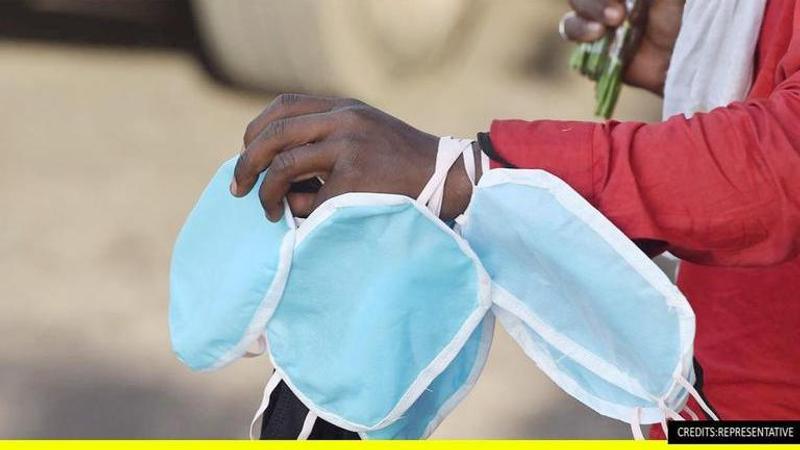Published 14:38 IST, September 19th 2020
COVID-19: Most homemade masks block large cough droplets, even as single layer, says study
Scientists examined the effectiveness of common household fabrics used in homemade masks in blocking droplets generated by coughing and sneezing, and have found that they are considerably more protective even as a single layer.

Advertisement
Scientists examined the effectiveness of common household fabrics used in homemade masks in blocking droplets generated by coughing and sneezing, and have found that they are considerably more protective even as a single layer.
While earlier studies have focussed on the transfer of tiny, nanoscale aerosol particles through masks, the researchers from the University of Illinois at Urbana-Champaign in the US said speaking, coughing, and sneezing generates larger droplets -- about one millimetre in diameter -- that can carry virus particles.
They said the larger droplets pose a problem as they can squeeze through the pores of some fabrics if they have sufficient momentum, and break into smaller droplets and become airborne.
In the study, published in the journal Extreme Mechanics Letters, the scientists filled the nozzle of an inhaler with distilled water seeded with easy-to-find ultrasmall fluorescent particles -- which happens to be the size of a novel coronavirus particle.
The inhaler forced the water through the nozzle when puffed, and generated high-momentum droplets that collected on a plastic dish placed in front of the inhaler, the study noted.
The researchers repeated this process with the various materials placed over the collection dishes to test their ability to block the particles.
"We count the number of nanoparticles landing on the dish using a high-resolution confocal microscope. We can then use the ratio of the number collected with and without the fabric to give us a measure of droplet-blocking efficiency," said study co-author Taher Saif.
However, the scientists said for an individual to feel compelled to wear a mask, the material must not only be able to block the droplets but also be comfortable and breathable.
"A mask made out of a low-breathability fabric is not only uncomfortable but can also result in leakage as the exhaled air is forced out around contours of a face, defeating the purpose of the mask and providing a false sense of protection," Saif said.
"Our goal is to show that many common fabrics exploit the trade-off between breathability and efficiency of blocking droplets -- large and small," he added.
The scientists tested the breathability and droplet-blocking ability of 11 common household fabrics, including new and used garments, quilted cloths, bedsheets and dishcloth material, using a medical mask as a benchmark.
They then characterised the fabrics in terms of their construction, fibre content, weight, thread count, porosity and water-absorption rate.
Their analyses revealed that droplets leave the inhaler at about 17 metres per second (mps) while those released by speaking, coughing and sneezing have velocities within the range of 10 to 40 (mps).
"We found that all of the fabrics tested are considerably effective at blocking the 100-nanometer particles carried by high-velocity droplets similar to those that may be released by speaking, coughing and sneezing, even as a single layer," Saif said.
"With two or three layers, even the more permeable fabrics, such as T-shirt cloth, achieve droplet-blocking efficiency that is similar to that of a medical mask, while still maintaining comparable or better breathability," he added.
The researchers believe the new experimental platform may offer a way to test fabrics for their blocking efficiency against the small and larger droplets that are released as people breathe, or cough.
14:38 IST, September 19th 2020




